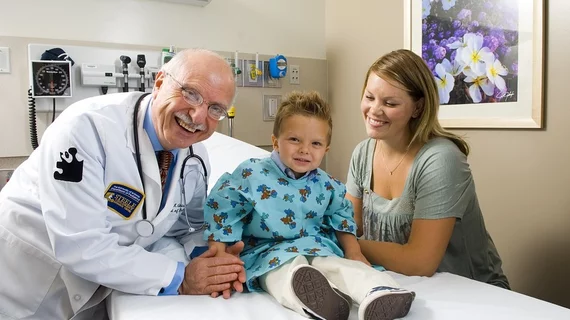Screening for sepsis in children and babies has grown quickly over the past several years. As methods and approaches multiply, machine learning continues looking like an eventual first-line diagnostic option.
The forecast is put forth, albeit indirectly, by a pair of pediatric emergency medicine specialists at Harvard and the University of Pennsylvania in a narrative review of the relevant medical literature published Aug. 20 by Pediatric Research.
“Machine learning and artificial intelligence offer the promise of creating better sepsis identification tools that leverage big data and can incorporate elements from the EHR that previously required manual input,” write Matthew Eisenberg, MD, MPH, of Boston Children’s Hospital and Fran Balamuth, MD, PhD, of Children’s Hospital of Philadelphia. “Rather than utilize rule-based thresholds such as systemic inflammatory response syndrome (SIRS), the pediatric early warning score, or the sequential organ failure assessment, such algorithms are trained to run complex tasks on large amounts of data in order to predict adverse outcomes.”
Sepsis, which occurs when the immune system turns on itself following an infection, is notoriously difficult to diagnose early in pediatrics. That’s because elevated temperature, rapid heartbeat and fast breathing—the early symptoms of sepsis—are common with many pediatric sicknesses.
What’s more, the pressure is on pediatric clinicians to get it right. According to Sepsis Alliance, more than 200 children develop sepsis every day in the U.S., and the count is increasing by 8% every year. The condition annually claims nearly 7,000 young lives while leaving many more permanently injured.
Odds for all those poor outcomes would drop dramatically if correct diagnoses were to be made quickly and widely enough.
Eisenberg and Balamuth suggest an ideal screening tool for pediatric sepsis would do three things well:
- Detect sepsis accurately, with sufficient sensitivity to prevent missed cases but a high enough positive predictive value (PPV) to minimize false positive alerts and the ensuing risk of alarm fatigue;
- Provide an alert early enough in the patient’s course to add value to the clinical team, rather than identifying a patient already suspected by the clinician to have sepsis; and
- Be easy to use while returning minimal inter-rater variability and incorporating seamlessly into clinical workflows.
AI’s leveraging of big data “allows integration of dynamic vital sign changes, which are likely to be more sensitive in detecting alterations in a patient’s clinical status than absolute values, particularly in patients whose baseline vital signs or laboratory values are abnormal,” Eisenberg and Balamuth write. “Machine learning may therefore result in prediction rules that detect sepsis both more accurately and earlier than rule-based thresholds.”
AI has been shown to do just that in adults, the authors point out, citing studies from 2019 and 2020.
However, it’s still early days for AI sepsis prediction in pediatrics—and many questions need to be answered.
“It is unclear what clinical criteria best identify children with sepsis while minimizing risk of false positive alerts,” Eisenberg and Balamuth write. “Likewise, both automated and manual sepsis screening have relative advantages and disadvantages, and there is no consensus on whether either one or a hybrid of the two performs best.”
More:
The answers to these questions are likely to be context specific—a tool that performs well in an ED may be insufficiently specific for use in an ICU setting. At the same time, a community ED remote from tertiary or ICU care may prefer a less specific but more sensitive tool or one that values earlier alerting over accuracy in order to facilitate transfer of children prior to clinical deterioration. To answer these questions, multicenter studies will be needed across a spectrum of clinical settings to overcome the relatively low sepsis incidence at any given site, and machine learning will need to be leveraged to best make use of big data.”
The paper is available in full for free.

